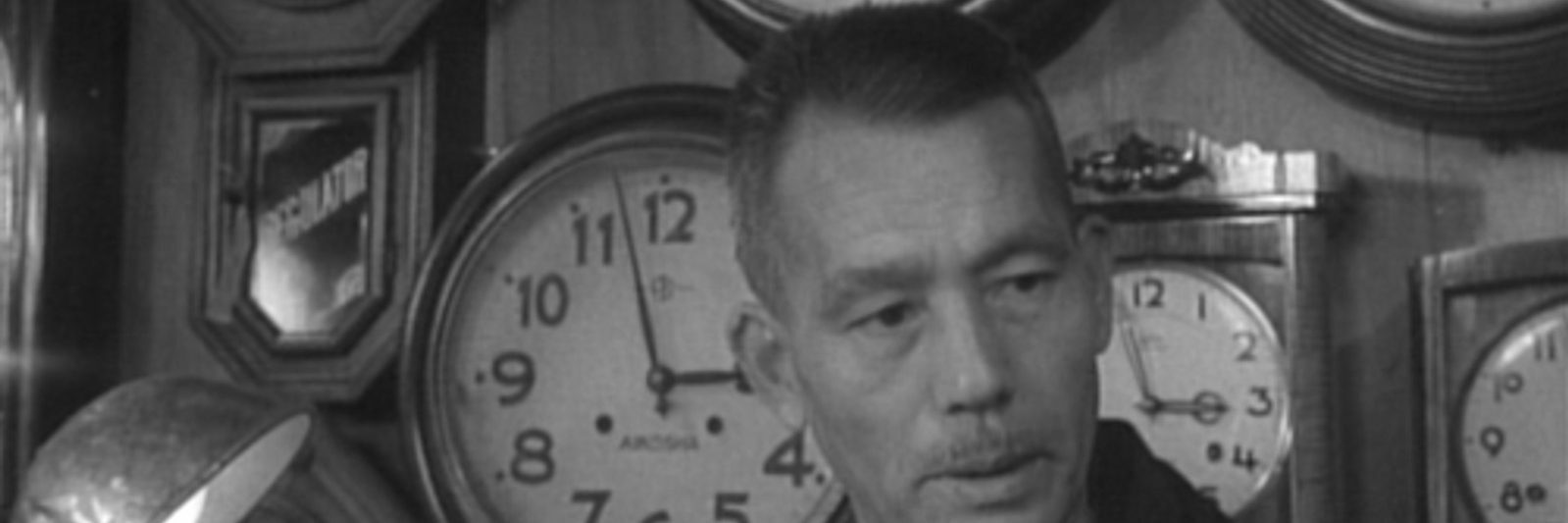
In 2007, almost half a century after the first movie, “Points and Lines” was remade for TV. It was an ambitious endeavor for a TV drama; it was a 2-part program, almost 2 hours each, totaling 4 hours; because the story was set in 1950’s, a huge budget was put into artworks and sets to recreate the era, and many of the location shootings were meticulously planned and executed not to give away anything modern; the story was reworked to be more convincing to modern audience while expanding the role of the detective from Fukuoka (Torikai), the role played by Takeshi Kitano. The results is a mixed bag, to say the least.
The original mystery about the murder disguised as a double suicide is framed by the conversation between the aged man and woman, taking place in 2007. The detective Mihara , now probably in his eighties, meets with Detective Torikai’s daughter in the crowded cafe inside Tokyo station. This tricky device of wrapping all the main story into the flashback actually worked, at least to me. It gave me a sense of time, how far and old the story is, and how these characters in the main plot would have aged.
One of the problems I had with the main story was how they transformed Torikai from a meek, quiet and thoughtful veteran detective in the original story and the film version in 1958, to an energetic, sometimes enigmatic and very pivotal figure in the new version. Some of the new elements (Torikai, just another detective in a rural area, investigating wildly in Tokyo, for example) aren’t simply convincing, while the other elements to make him look like a hero seems too unnatural. However, Takeshi Kitano (billed as Beat Takeshi) did a decent job not to exaggerate these antics and kept the role in the range of still quite believable. A self-conscious actor with a lesser talent would have made the drama a disaster.
Another crucial change I find least satisfying is the role of Tatsuro Yasuda, who is the prime suspect of the mystery. In the film version, he was a rich nouveau, who was juggling corrupt bureaucrats during the day and juggling nightclub girls during the night. He represented what we call the main engine of economic explosion from fifties to eighties. He knows nothing about class, except something expensive must be good. This Yasuda wears the loudest, ugliest bathrobe you could find in the market, thinking it looks grand on him, because it is expensive (and probably imported from Italy). He eats like an animal, he laughs like a sophomore drinking a kegful of beer, he thinks only about women and money, and how to get them easily by cheating, he probably smells like an industrial-grade cologne with a fake French name, which is on the verge of smelling like a grease lubricating a Sherman tank. But Yasuda in the new version is nothing of a sort. This guy looks like an Ivy-League graduate, probably appreciating a Haiku during his lunch hour. Of course he does a lot of dirty works for money, but there is a hint that he is doing it for a higher purpose. He looks sharp in his three-piece suits (probably imported from Italy) . He doesn’t mind spending money on women, but he isn’t cheating on his wife, either. He probably smells like a soap. Frankly, it stinks.


For me, Yasuda is a kind of a man I used to know when I was a kid, back in ’60s and ’70s. These were the men who didn’t know how to be ‘sophisticated’, as in the present definition of ‘sophisticated’. They worked hard. They wanted to be respected. But their moral, sensibility and ideal weren’t the kind we are used to. They enjoyed prosperity during the decades of economic boom, spending on what was cool back then. They spent a lot of money and many hours in nightclubs, fooling around with girls. What’s wrong with it? It is not what we do today, but that was how it was back then. I remember one of my uncles proudly boasting how he enjoyed riding a cart on the golf course. It might sound pathetic today, but, back then, that was as cool as getting an Apple Watch. And if you are making a drama in that historical context, re-engineering the sensibility of the time may look appealing, but ultimately, it just looks fake. Especially in the context of Seicho Matshumoto’s mystery, because, his theme is about this sensibility of the time bringing tension among us, especially between Tokyo and peripherals. The new version is cleansed with sensibility of Tokyo in 2007.
So someday, proudly showing off your Apple Watch might sound pathetic. But it’s alright, isn’t it?
Points and Lines (点と線, 2007)
Produced by Kazuhiko Fujimoto
Directed by Kan Ishibashi
Written by Hiroshi Takeyama Based on the novel by Seicho Matsumoto
Starring Beat Takeshi, Katsunori Takahashi, Toshiro Yanagiba, Yui Natsukawa
TV Asahi
Copyrighted materials, if any, on this web page are included as “fair use”. These are used for the purpose of research, review or critical analysis, and will be removed at the request of copyright owner(s).

